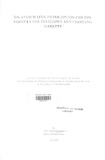| dc.description.abstract | Popular models such as Black-Scholes-Merton (BSM73) lack most of empirically found stylized features of financial data, such as volatility clustering, leptokurtic nature of log returns, joint covariance structure and aggregational Gaussianity, hence it may not consistently price all the European and exotic options that are quoted in one specific market. Such simplifying assumptions in real financial markets, translate to the implied volatility curves typically skewed, with smiley shapes or even more complex structures.
In this study, we model components of return distribution, assumed to be directed by a latent news process, in developed and emerging economies. We endeavor to identify stochastic processes that govern equity market indices as the underlying process, bearing in mind arithmetic Brownian motion of Louis Bachelier, geometric Brownian motion of Samuelson, exponential Levy, binomial trees,pentanomiallattices, Duan GARCH model and AR-PARCH-Levy model as some of the formulas which could be implemented for use universally. Daily log returns assets from both markets ( developed and emerging ) are found to exhibit positive autocorrelation and changing variances.
Possibility of option pricing under linear autoregressive power ARCH type dynamics and conditional leptokurtic residuals of the underlying process is investigated and AR APARCH Levy filter model developed. Further, the unconditional variance of the AR APARCH Levy model under the local risk neutral valuation relationship equivalent measure is formulated.
Mean mixture distribution, here termed the generalized hyperbolic distribution and some of its subclasses, such as normal inverse Gaussian, hyperbolic and variance gamma distributions, are used to construct stochastic process for a strictly stationary filtered residuals.
The need to study these distribution(s) is to accommodate certain frequently observed stylistic facts of daily log returns, ranging from temporal joint dependance structures to the presence of jumps. While Brownian motion generates a normal innovations, a non-gaussian innovations can be generated by a pure jump Levy process. To capture changing volatility, we apply ARCH type model. A time changed Levy process as used in variance gamma process was used to draw comparison in both economies. Developed markets were observed to have a faster business clock, less or no autoregressive mean and pronounced changing correlated volatilities as opposed to emerging markets.
A closed-form option pricing model, APARCH Levy filter, which nests BSM73 model, minimizes the' consistent volatility smiles' and incorporates most of the stylized features observed in developed and emerging economies is constructed and presented. An extensive empirical analysis based on S&P500 index options and Nairobi stock NSE20 index is used to compare performance of proposed model against BSM73 and G ARCH option pricing model of Duan 1995. We explore the application of APARCH Levy filter model to other types of exotic options such as look back options and arithmetic Asian type options. | en_US |

